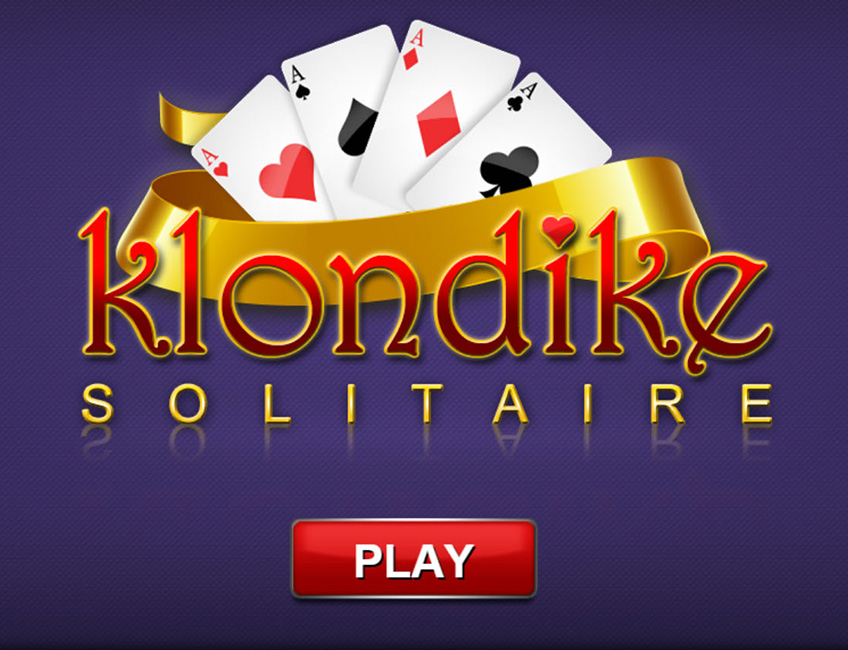Klondike Solitaire adalah salah satu permainan kartu yang telah menghibur jutaan orang di seluruh dunia. Dengan kombinasi strategi dan keberuntungan, permainan ini menawarkan tantangan yang menyenangkan bagi pemain pemula maupun berpengalaman.
Sejak kemunculannya, Klondike Solitaire telah menjadi bagian dari budaya populer, menginspirasi banyak variasi dan adaptasi. Aturan dasarnya yang sederhana, namun memerlukan pemikiran strategis, menjadikannya favorit di berbagai kalangan.
Sejarah Klondike Solitaire

Permainan Klondike Solitaire telah menjadi salah satu permainan kartu paling populer di seluruh dunia, dikenal dengan kesederhanaan dan daya tariknya yang menantang. Permainan ini memiliki akar yang dalam dalam tradisi permainan kartu, dan seiring berjalannya waktu, Klondike Solitaire telah mengalami banyak perubahan dan perkembangan yang membuatnya semakin menarik bagi pemain dari berbagai kalangan.
Asal-usul Klondike Solitaire
Permainan ini diperkirakan berasal dari akhir abad ke-19, pada saat permainan kartu mulai menjadi hobi yang umum di kalangan masyarakat. Klondike Solitaire awalnya dikenal sebagai “Patience”, sebuah istilah yang digunakan untuk menggambarkan permainan solo yang membutuhkan kesabaran dan ketekunan. Nama “Klondike” sendiri diambil dari nama daerah di Kanada yang terkenal dengan demam emas pada tahun 1890-an, di mana banyak orang mendambakan keberuntungan.
Perkembangan Permainan
Seiring dengan popularitasnya, Klondike Solitaire mulai menginspirasi berbagai variasi permainan. Dalam beberapa dekade, banyak versi yang dimunculkan, mulai dari yang sederhana hingga yang lebih kompleks. Keberadaan komputer pada akhir abad ke-20 memberikan dorongan besar bagi permainan ini. Versi digital dari Klondike Solitaire membuatnya lebih mudah diakses oleh banyak orang, memungkinkan pemain untuk bermain kapan saja dan di mana saja.
Pengaruh terhadap Budaya Populer
Klondike Solitaire tidak hanya menjadi permainan kartu yang populer, tetapi juga memengaruhi budaya populer. Banyak referensi terhadap permainan ini muncul dalam film, acara televisi, dan bahkan lagu. Dalam dunia video game, Klondike Solitaire menjadi salah satu permainan yang paling banyak dimainkan, sering kali sebagai cara untuk bersantai atau mengisi waktu luang.
Variasi Klondike Solitaire
Terdapat banyak variasi dari Klondike Solitaire yang saat ini ada. Beberapa di antaranya meliputi:
- Klondike dengan 3 Kartu: Menaikkan tantangan dengan menarik tiga kartu sekaligus dari dek.
- Klondike dengan 1 Kartu: Versi yang lebih sederhana di mana pemain hanya menarik satu kartu pada satu waktu.
- Klondike Turn 2: Menarik dua kartu sekaligus dari dek, yang menambah elemen strategi.
- Klondike Variasi Lainnya: Beberapa versi lain yang menggabungkan elemen dari permainan kartu lain, meningkatkan keragaman cara bermain.
Dengan banyaknya variasi ini, Klondike Solitaire tetap relevan dan menarik bagi berbagai generasi pemain, menjadikannya salah satu permainan kartu klasik yang tidak akan lekang oleh waktu.
Aturan Dasar Permainan: Klondike Solitaire

Klondike Solitaire adalah permainan kartu klasik yang menguji strategi dan kemampuan berpikir pemain. Untuk pemain baru, memahami aturan dasar sangat penting agar dapat menikmati permainan tanpa kebingungan. Dalam panduan ini, kita akan membahas langkah-langkah untuk memulai permainan, menyelesaikannya, serta rincian jenis kartu yang digunakan dan fungsinya dalam permainan.
Langkah Memulai Permainan
Sebelum mulai bermain, ada beberapa hal yang perlu disiapkan. Mari kita lihat langkah-langkahnya:
- Pilih tempat yang tenang dan nyaman untuk bermain.
- Siapkan satu set kartu remi standar yang terdiri dari 52 kartu.
- Kocok kartu dengan baik sebelum menata meja permainan.
- Buat tujuh tumpukan kartu di meja: tumpukan pertama memiliki satu kartu, tumpukan kedua dua kartu, dan seterusnya hingga tumpukan ketujuh memiliki tujuh kartu.
- Letakkan sisa kartu sebagai tumpukan sisa di samping.
- Putar kartu paling atas dari tumpukan sisa untuk memulai permainan.
Dengan langkah-langkah ini, permainan Klondike Solitaire siap untuk dimulai. Pemain akan berusaha mengatur semua kartu ke dalam empat tumpukan berdasarkan jenis kartu dari As hingga Raja.
Menyelesaikan Permainan
Untuk menyelesaikan permainan, pemain harus mengatur semua kartu ke dalam empat tumpukan berdasarkan jenis kartu. Berikut adalah langkah-langkah untuk menyelesaikannya:
- Pindahkan kartu dari satu tumpukan ke tumpukan lain dengan mengikuti urutan warna alternatif (misalnya, merah di atas hitam).
- Kartu As yang ditemukan harus segera dipindahkan ke tumpukan dasar.
- Kartu yang sama dapat dikumpulkan dalam tumpukan dasar mulai dari As hingga Raja.
- Gunakan tumpukan sisa untuk menarik kartu tambahan jika tidak ada langkah yang dapat diambil.
Pemain akan terus memindahkan kartu hingga semua kartu terorganisir dalam tumpukan dasar. Jika tidak ada langkah yang memungkinkan dan kartu sisa habis, permainan dianggap selesai.
Jenis-Jenis Kartu dan Fungsinya, Klondike solitaire
Di Klondike Solitaire, terdapat beberapa jenis kartu yang mempunyai fungsi tertentu. Berikut adalah rincian mengenai jenis-jenis kartu tersebut:
| Jenis Kartu | Fungsi |
|---|---|
| As | Dasar dari setiap tumpukan kartu yang harus diurutkan dari As hingga Raja. |
| Raja | Kartu tertinggi yang hanya dapat diletakkan di atas tumpukan kosong. |
| Kartu Bernomor (2-10) | Digunakan untuk membangun urutan yang diperlukan untuk tumpukan dasar. |
| J, Q, K | Digunakan dalam urutan warna alternatif untuk membangun tumpukan di meja permainan. |
Memahami jenis-jenis kartu dan fungsinya sangat penting bagi pemain untuk merencanakan strategi dan menyelesaikan permainan dengan baik.
Strategi Menang
Permainan Klondike Solitaire bukan hanya sekadar keberuntungan, tetapi juga melibatkan strategi yang cermat. Mengetahui cara terbaik untuk mengatur kartu dan membuat keputusan yang tepat dapat meningkatkan peluang Anda untuk menang. Mari kita bahas beberapa strategi yang bisa Anda terapkan untuk meraih kemenangan.
Strategi Efektif dan Kurang Efektif
Dalam permainan ini, tidak semua strategi memberikan hasil yang sama. Beberapa strategi terbukti lebih efektif daripada yang lain. Berikut adalah tabel perbandingan antara strategi yang efektif dan yang kurang efektif:
| Strategi | Efektivitas |
|---|---|
| Mengungkap Kartu Tersembunyi dengan Cepat | Efektif |
| Menempatkan Kartu Sesuai Warna | Kurang Efektif |
| Memprioritaskan Kartu As dan 2 | Efektif |
| Menahan Diri dari Memindahkan Kartu yang Tidak Perlu | Efektif |
| Fokus pada Kartu yang Sedang Tidak Tersedia | Kurang Efektif |
Skenario Permainan dan Langkah Strategis
Menerapkan strategi yang tepat sesuai dengan situasi yang ada dapat membantu Anda mengatasi tantangan dalam permainan. Berikut ini adalah beberapa skenario yang mungkin Anda hadapi dan langkah-langkah strategis untuk menghadapinya:
-
Skenario 1: Kartu As Tersembunyi
Dalam situasi ini, fokuslah untuk membuka kartu tertutup di tumpukan. Cobalah untuk menggeser kartu-kartu yang tidak penting untuk mengungkap As dan 2, karena ini akan memberikan keuntungan terbesar. -
Skenario 2: Banyak Kartu di Tumpukan
Jika Anda memiliki banyak kartu di tumpukan, prioritaskan untuk mengatur kartu-kartu dengan warna yang cocok untuk mengosongkan tumpukan dan mengeksplorasi kartu tertutup. -
Skenario 3: Terlalu Banyak Kartu di Meja
Ketika meja penuh dengan kartu, hindari memindahkan kartu yang tidak perlu ke tumpukan. Sebaliknya, pikirkan langkah yang dapat membantu Anda mengosongkan tumpukan dan mempercepat proses permainan.
Tips dan Trik

Bermain Klondike Solitaire bisa jadi sangat menyenangkan, terutama jika kamu tahu trik dan tipsnya. Baik kamu seorang pemula yang baru mulai mencoba permainan ini atau pemain berpengalaman yang ingin meningkatkan keterampilan, ada banyak hal yang bisa dipelajari. Dengan memahami beberapa strategi dan menghindari kesalahan umum, kamu bisa meraih kemenangan lebih sering.
Tips untuk Pemain Pemula
Bagi pemain pemula, ada beberapa langkah praktis yang bisa diambil untuk meningkatkan permainan. Kesabaran dan ketelitian adalah kunci, dan berikut adalah beberapa tips yang bisa membantu:
- Pahami tata letak kartu: Kenali posisi kartu yang terbuka dan yang tertutup. Ini penting agar kamu tahu kartu mana yang bisa dimainkan.
- Fokus pada kartu yang terbuka terlebih dahulu: Usahakan untuk mengosongkan kolom dengan kartu yang tertutup. Ini memberi kamu lebih banyak opsi untuk bermain.
- Gunakan foundation dengan bijak: Hanya tempatkan kartu yang paling tinggi dan sesuai warna di foundation untuk menghindari kekacauan.
- Perhatikan gerakanmu: Sebelum melakukan langkah, pikirkan dampak jangka panjangnya. Apakah itu menguntungkan permainanmu?
Trik untuk Pemain Berpengalaman
Untuk pemain yang sudah lebih mahir, berikut adalah beberapa trik yang dapat membantu meningkatkan kinerja:
- Mulai dengan kartu yang paling banyak terbuka: Ini memberi kamu akses yang lebih besar terhadap kartu lainnya dan membuat permainan lebih mudah.
- Manfaatkan undo: Jika kamu bermain secara digital, jangan ragu untuk menggunakan fungsi undo untuk mengevaluasi langkahmu sebelum melanjutkan.
- Perhatikan peluang untuk memindahkan kartu: Selalu cari kesempatan untuk mengosongkan kolom, terutama jika kamu bisa memindahkan kartu yang lebih rendah ke foundation.
Kesalahan Umum yang Harus Dihindari
Sebagai tambahan, berikut adalah beberapa kesalahan umum yang sering dilakukan pemain:
- Menyimpan kartu tinggi di kolom yang tidak perlu.
- Terburu-buru dalam membuat keputusan tanpa memikirkan dampaknya.
- Mengabaikan kartu yang bisa dimainkan meskipun tidak terlihat langsung.
- Fokus terlalu banyak pada foundation dan mengabaikan kolom lain.
Komunitas dan Turnamen
Bermain Klondike Solitaire bukan hanya soal kesenangan individu, tetapi juga tentang terlibat dalam komunitas yang penuh semangat dan mengikuti turnamen yang menantang. Banyak pemain dari berbagai penjuru dunia berkumpul secara online untuk berbagi pengalaman, strategi, dan tentunya, menyemarakkan suasana permainan. Di bagian ini, kita akan membahas tentang komunitas yang ada serta turnamen yang bisa diikuti oleh para penggemar Klondike Solitaire.
Komunitas Online yang Aktif
Komunitas online memberikan wadah bagi para pemain Klondike Solitaire untuk saling berinteraksi. Di platform-platform seperti forum game, grup Facebook, dan aplikasi chat seperti Discord, para anggota berbagi tips, bertukar strategi, dan bahkan menyelenggarakan sesi bermain bersama. Beberapa komunitas yang patut dicatat antara lain:
- Klondike Solitaire Enthusiasts: Sebuah grup Facebook yang memiliki ribuan anggota aktif, tempat berbagi strategi dan hasil permainan.
- Solitaire Players Club: Forum yang menyediakan ruang diskusi mengenai berbagai jenis solitaire, termasuk Klondike, dengan banyak tips dari para veteran.
- Discord Klondike Community: Server Discord yang menyediakan channel untuk bertukar pendapat, berdiskusi, dan menjadwalkan turnamen.
Bergabung dengan komunitas ini sangat mudah. Cukup dengan mencari grup di media sosial atau forum dan mengirimkan permohonan untuk bergabung. Siapa pun dapat berpartisipasi tanpa batasan, baik pemula maupun pemain berpengalaman.
Turnamen Klondike Solitaire
Turnamen Klondike Solitaire memberikan kesempatan bagi para pemain untuk menguji keterampilan mereka dalam format kompetitif. Beberapa turnamen diadakan secara rutin, baik oleh komunitas lokal maupun internasional. Peserta biasanya harus mendaftar terlebih dahulu dan mengikuti aturan yang ditetapkan. Berikut adalah beberapa contoh turnamen yang populer:
- Solitaire World Championship: Turnamen tahunan yang diadakan secara online dengan peserta dari berbagai negara, menawarkan hadiah menarik.
- Klondike Tournament Series: Diadakan oleh komunitas online, biasanya dengan format eliminasi yang menantang pemain untuk bertahan hingga akhir.
- Friendly Community Tournaments: Turnamen kecil yang diadakan oleh grup Facebook atau Discord dengan suasana santai dan hadiah sederhana.
Untuk berpartisipasi, pemain biasanya perlu mendaftar melalui situs resmi atau grup tempat turnamen itu diselenggarakan. Setiap turnamen memiliki syarat dan ketentuan yang berbeda, jadi penting untuk membaca detailnya sebelum mendaftar.
Pengalaman Pemain dalam Turnamen
Setiap turnamen Klondike Solitaire menghadirkan pengalaman yang berbeda bagi para pesertanya. Banyak pemain melaporkan bahwa mengikuti turnamen tidak hanya meningkatkan keterampilan bermain, tetapi juga memberikan kesempatan untuk berkenalan dengan pemain lain dari berbagai latar belakang. Misalnya, seorang pemain dari Indonesia mungkin mendapatkan teman baru dari Eropa atau Amerika Selatan, yang membuat pengalaman bermain jadi lebih kaya.
Beberapa pengalamannya meliputi:
- Persaingan yang Mendebarkan: Pemain sering merasakan adrenalin saat berhadapan dengan lawan yang tangguh, mendorong mereka untuk berusaha lebih keras.
- Belajar dari Pemain Lain: Melihat strategi dan cara bermain pemain lain memberikan wawasan baru yang berguna untuk meningkatkan permainan mereka sendiri.
- Momen Kebersamaan: Banyak pemain merasakan kebersamaan yang kuat dengan komunitas, bahkan setelah turnamen berakhir, dengan saling memberikan dukungan dan tips.
Melalui turnamen ini, para pemain tidak hanya bersaing, tetapi juga membangun jaringan sosial yang bisa bertahan jangka panjang, menjadikan Klondike Solitaire lebih dari sekadar permainan, tetapi juga sebuah komunitas yang saling mendukung dan menginspirasi.
Aplikasi dan Platform Permainan

Klondike Solitaire bukan hanya sebuah permainan kartu, tetapi juga sebuah pengalaman yang menyenangkan yang bisa diakses melalui berbagai aplikasi dan platform. Dengan teknologi yang semakin canggih, banyak pengembang yang menawarkan versi digital dari permainan klasik ini, masing-masing dengan keunikan dan fitur menarik. Mari kita telusuri beberapa aplikasi dan platform yang paling populer di mana kamu dapat menikmati Klondike Solitaire.
Daftar Aplikasi dan Platform
Dalam memilih aplikasi untuk bermain Klondike Solitaire, penting untuk mempertimbangkan fitur dan pengalaman pengguna. Berikut adalah beberapa aplikasi dan platform yang banyak digunakan:
- Microsoft Solitaire Collection – Aplikasi resmi dari Microsoft yang tidak hanya menyediakan Klondike Solitaire tetapi juga varian permainan kartu lainnya. Fitur menariknya termasuk tantangan harian dan pencapaian yang dapat diperoleh.
- Solitaire by MobilityWare – Aplikasi yang sangat populer dengan fitur seperti mode malam dan pengingat untuk membantu pemain tetap fokus. Ulasan menunjukkan bahwa pengguna menyukai antarmuka yang bersih dan mudah diakses.
- Klondike Solitaire Collection – Aplikasi yang menawarkan berbagai tema dan desain kartu. Banyak pemain mengapresiasi kemampuan untuk menyesuaikan latar belakang sesuai dengan selera mereka.
- Google Play Games – Platform ini menyediakan akses ke berbagai permainan Klondike Solitaire yang dikembangkan oleh berbagai pengembang. Salah satu fitur unggulannya adalah kemampuan untuk berkompetisi dengan teman-teman.
- Pogo.com – Situs web yang menawarkan permainan ratusan permainan termasuk Klondike Solitaire, dengan fitur multiplayer dan turnamen. Pemain menikmati interaksi sosial yang ditawarkan oleh platform ini.
Fitur Aplikasi
Setiap aplikasi menawarkan fitur unik yang dapat meningkatkan pengalaman bermain. Mari kita lihat beberapa fitur yang sering disorot oleh pemain:
- Grafik Berkualitas Tinggi – Banyak aplikasi modern menampilkan grafik yang memukau, memberikan pengalaman visual yang lebih imersif.
- Mode Offline – Beberapa aplikasi memungkinkan pemain untuk menikmati permainan tanpa koneksi internet, yang sangat berguna saat bepergian.
- Tantangan Harian – Fitur ini ditawarkan oleh beberapa aplikasi untuk menjaga pemain tetap terlibat dan memberikan kesempatan untuk mendapatkan hadiah.
- Personalisasi Kartu dan Latar Belakang – Banyak aplikasi memungkinkan pemain untuk mengubah tema kartu dan latar belakang, menyesuaikan pengalaman bermain sesuai dengan preferensi mereka.
- Leaderboard dan Peringkat – Fitur ini memungkinkan pemain untuk bersaing dengan teman atau pemain lain di seluruh dunia, menambah unsur kompetisi yang menyenangkan.
Pengalaman Pengguna
Pengalaman pengguna di setiap aplikasi bervariasi, dan banyak pemain membagikan pendapat mereka melalui ulasan. Berikut adalah beberapa poin penting yang disampaikan oleh pengguna:
- Antarmuka Pengguna – Banyak pemain menghargai aplikasi yang memiliki antarmuka yang sederhana dan intuitif, sehingga lebih mudah untuk menikmati permainan tanpa kebingungan.
- Kecepatan dan Responsivitas – Aplikasi yang cepat dan responsif sangat disukai, terutama saat pemain melakukan gerakan cepat dalam permainan.
- Adanya Iklan – Beberapa aplikasi gratis sering disertai iklan yang mengganggu, tetapi banyak pemain bersedia menghadapi hal ini demi akses gratis.
- Dukungan Pelanggan – Ulasan positif sering kali mencakup pengalaman baik dengan dukungan pelanggan, yang membantu menyelesaikan masalah teknis dengan cepat.
- Fitur Sosial – Aplikasi yang menyediakan fitur untuk berinteraksi dengan teman atau pengguna lain sering kali mendapatkan ulasan yang lebih baik karena menambah dimensi sosial dalam permainan.
Siapa sih yang tidak suka bermain game? Apalagi jika kamu bisa mendapatkan free games yang seru dan tak menguras kantong. Di dunia game saat ini, banyak pilihan menarik yang bisa kamu coba tanpa bayar. Jadi, tunggu apa lagi? Ayo eksplorasi dan temukan game hebat yang bisa mengisi waktu luangmu!
Kalau kamu lagi nyari hiburan tanpa harus keluar uang, ada banyak pilihan free games yang bisa kamu mainkan. Dari game petualangan seru hingga puzzle yang mengasah otak, semuanya tersedia secara gratis. Kamu bisa menghabiskan waktu sambil bersenang-senang tanpa merasa terbebani oleh biaya. Jadi, siapkan dirimu untuk menjelajahi dunia game yang menakjubkan!


